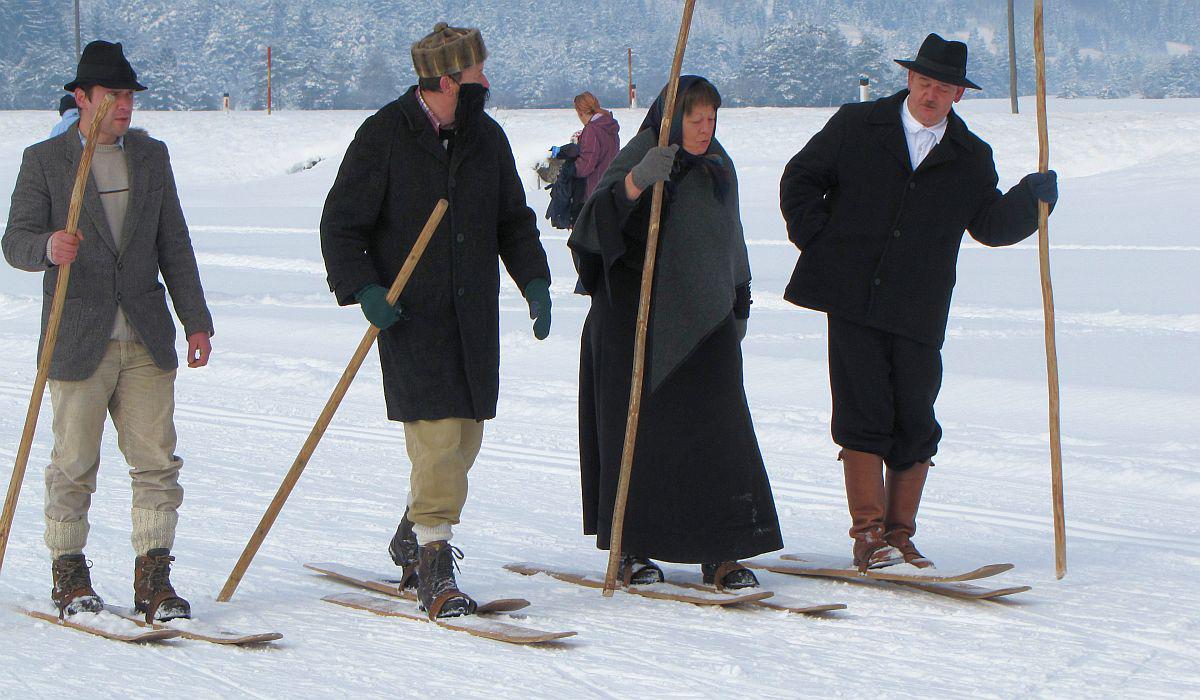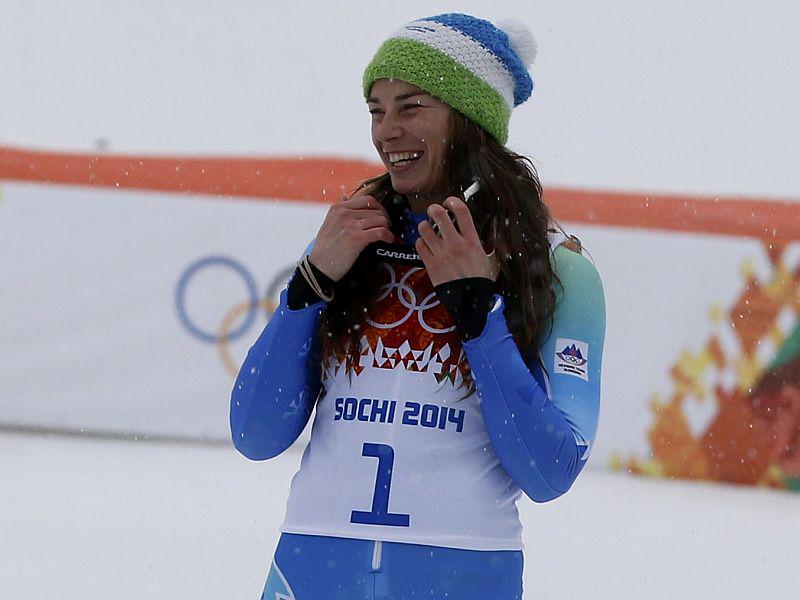

It is one of Slovenia’s most distinctive plateaus, famous for livestock farming and woodenware production. In terms of the number of villages and hamlets, it is one of the most populated areas of Notranjska. Nature is still pristine here in the land of fresh air and healthy sun. The variegated landscape offers excellent opportunities for hiking, cycling or horseback riding and cross-country skiing in winter (Bloke cross-country ski marathon). Slovenians’ certainty to be a skiing nation is connected with the latter. But is that true?
The cradle of skiing
Bloke was first mentioned in written documents in 1260, the settlement of Nova vas in 1341. When considering ‘Bloke skiing’, it has to be stressed that it was first described in 1689 by polymath Janez Vajkard Valvasor in The Glory of the Duchy of Carniola as motion on skis in high snow. At the time, the people of Bloke were the only ones in Central Europe using skis to move on snow. According to this theory and historical facts, the Bloke Plateau was thus the cradle of old folk skiing.
Ski production
The people of Bloke made skis from hard woods, preferably from old beech, because of its thick and even annual rings, which make it easy to split and bend. Elsewhere, other varieties of wood were used, such as birch because it is greasy and slippery. Maple, pear, elm, ash and cherry were also highly regarded. They liked to use old, already bent beech wood, because it did not require additional bending.
The people of Bloke used skis to transport water, wood, woodenware and cereals, and also coffins on special funeral skis. Bloke skiers were masterful at turning corners on steep slopes, and Valvasor’s enthusiasm for their downhill skiing techniques is not surprising. But we must not overlook the second, also very important means of transport, i.e. the snowshoes that the people of Bloke used for lengthy walks on snow and for poaching, particularly when the snow was wet.
On the basis of oral tradition and museum specimens, the measurements of skis can be estimated at 1.50 metre in length, about 15 centimetres in width (the older ones were about 19 centimetres wide) and up to 2 centimetres thick. The length of the front curved section was about 20 per cent of the entire length of the ski; the average height of the curve was 10 centimetres. According to existing specimens and oral tradition, the function of the binding was to fasten the front part of the foot or the tip of a shoe to a ski. Materials and manufacturing techniques for the binding varied. We must not forget the wooden stick, which was a composite part of the equipment of the Bloke skier, particularly in hilly areas. The stick was up to 2 metres long, usually blunt. The locals called it tümpasta.
Revaluation of winter
In 2011, Borut Batagelj organised the exhibition, “Winter: from fear to joy”, pPresenting Slovenia’s skiing tradition, which was significant because it introduced diverse and controversial images of winter. It featured the pleasant and unpleasant aspects of winter. Was winter hated or loved in the past? The exhibition further deepened this question, as it pointed out permanent changes in our understanding of winter.
At the turn of the 20th century, the perception, experience and interpretation of winter began to change in Slovenian society. People started to accept winter much more than in the past. They were not as afraid of it as before, merely sheltering and hiding from it, but they began to admire it and take pleasure in it. Leisure time was not spent in heated rooms as often as before; people went outside instead.
The revaluation of winter came about with a new view of winter combined with romanticism and adventure. This was especially seen in the introduction of new winter sports in the second half of the 19th century. Sledding, skating and skiing were completely new types of activity in townspeople’s daily life. A new type of socialising developed, which was no longer related to spending time indoors. Before, winter had always been considered a season for theatre and balls, for sitting about in fancy cafes and inns on the one hand and in various cheap bars and smoky dives on the other hand. People started to enjoy lighted skating rinks. Fashion and new customs also began to evolve.
A skiing nation
Slovenians consider themselves a skiing nation. It is practically impossible to find one who has not heard of Tina Maze, Mateja Svet, Bojan Križaj and the products of the Elan company. The majority of Slovenians can ski or at least skate.
However, this image may also be stereotypical. Batagelj has proposed that Slovenians are considered a skiing nation not only because of Bloke skiing, but also because of pop culture. “Bloke skiing was abused; it became a rhetorical moment. All the Slovenian terminology, i.e. terms such as ski or skiing derive from Bloke skiing. But on the other hand, Bloke skiing in a way failed due to modern skiing.” In Batagelj’s opinion, Slovenians are lucky that Valvasor minutely described and provided evidence of Bloke skiing. In Croatian Lika (southwest Croatia, near the Velebit mountain range), no such records of the origin of skiing exist, only assumptions. Skis were known as rtve in Lika, which is similar to arte, the expression used for pre-modern skis in Russia by Sigmund von Herberstein in Notes on Muscovite Affairs. It is also interesting that the myth of a skiing nation was preserved in Slovenia, while it is not so deeply rooted in Croatia.
Skiing heroes
The first Slovenian ski hero was cross-country skier Franc Smolej (1908-1996), who was from the working class; the latter is important, as skiing in the past was, and now is even more so, an expensive sport. Smolej competed for the Kingdom of Yugoslavia at the 1936 Winter Olympics in Garmisch-Partenkirchen, where he was tenth in cross-country skiing over 50 kilometres and eighteenth over 18 kilometres. The team were also tenth in the 4 x 10 km relay. After the Second World War, Smolej competed for the Federal People’s Republic of Yugoslavia at the 1948 Winter Olympics in St. Moritz, where he competed over 50 kilometres and took fifteenth place. According to Batagelj, Tina Maze particularly deviates from the Slovenian collective spirit, unlike Bojan Križaj, because she trains individually and separately from the rest of the Slovenian team.
Proving that Slovenians are not the only ones who ‘adapted’ their skiing tradition, Batagelj also provides examples of the Austrians and Norwegians. He says, “The Austrians and Norwegians also invented their own skiing traditions. Explorer Fridtjof Nansen, who created a skiing boom in 1888 with his book The First Crossing of Greenland, is recognised as one of the most significant figures in Norwegian skiing. He achieved one of the milestones that skiing ideology adopted as it was being developed into a system. The Austrians are even more interesting. Until 1956, they did not formally exist as a nation, but were considered Germans. They acquired their national identity through skiing, through their heroes, and also through the momentum of a victim. When Karl Schranz was disqualified from the Olympic Games in 1972, he received a mass reception in Vienna. He was driven around in an open car like a president. The Austrians defined themselves through skiing or through the newly formed Alpine culture, also represented by the musical, The Sound of Music”.
Slovenia’s independence
Batagelj believes that skiing in Slovenia, similarly to Austria, had an important state-forming role. The independence of Slovenia is quite obviously connected with skiing. After only a few months of independence, the Slovenian national team competed in the 1992 Olympic Games in Albertville, France. “Skiing was thus a state-forming and later a state-building phenomenon. After the success of the national football team, a problem arose. How could this happen, if Slovenians are a skiing nation?” asks Batagelj – a challenging question.
Tanja Glogovčan, SINFO


























































